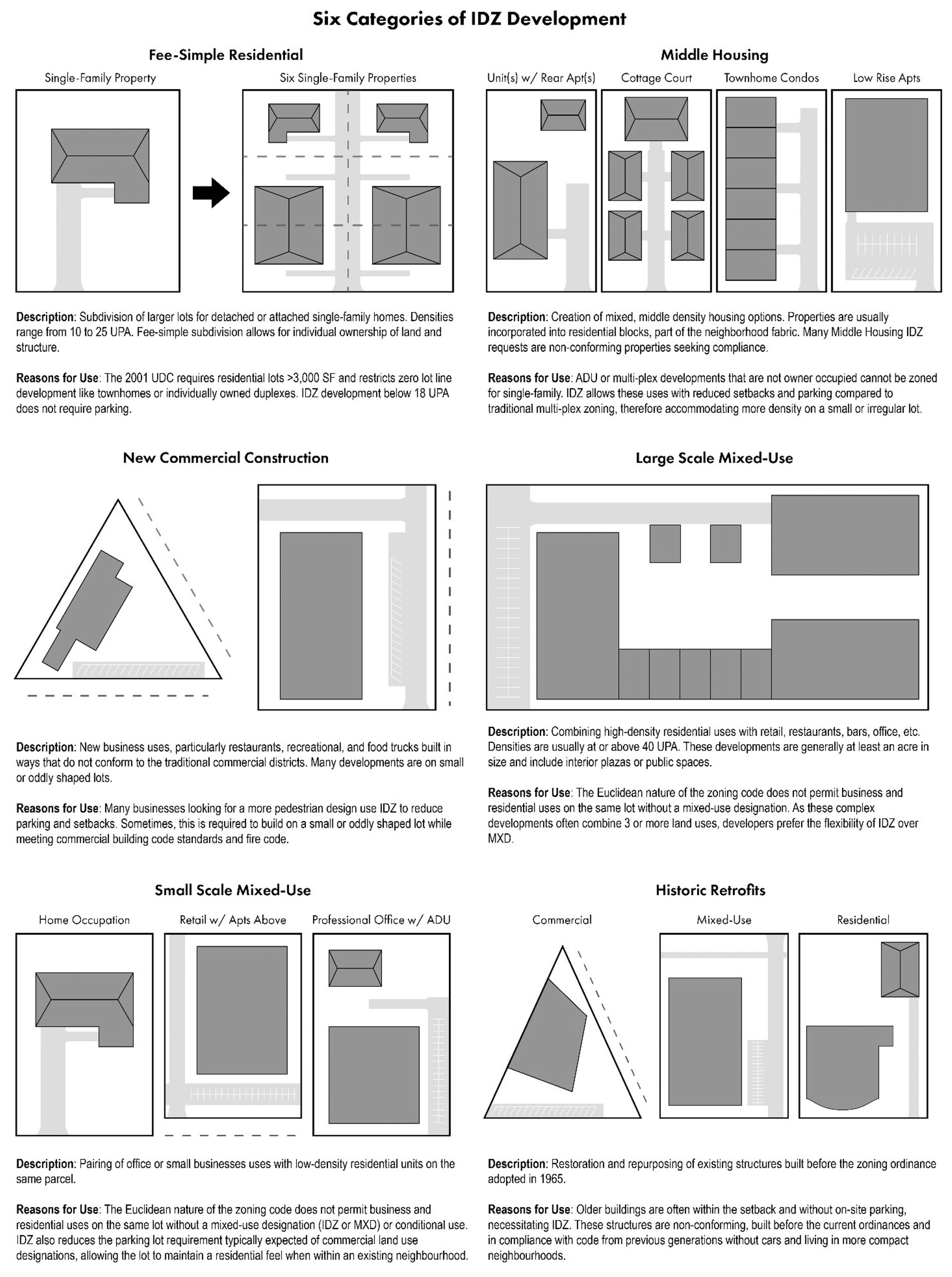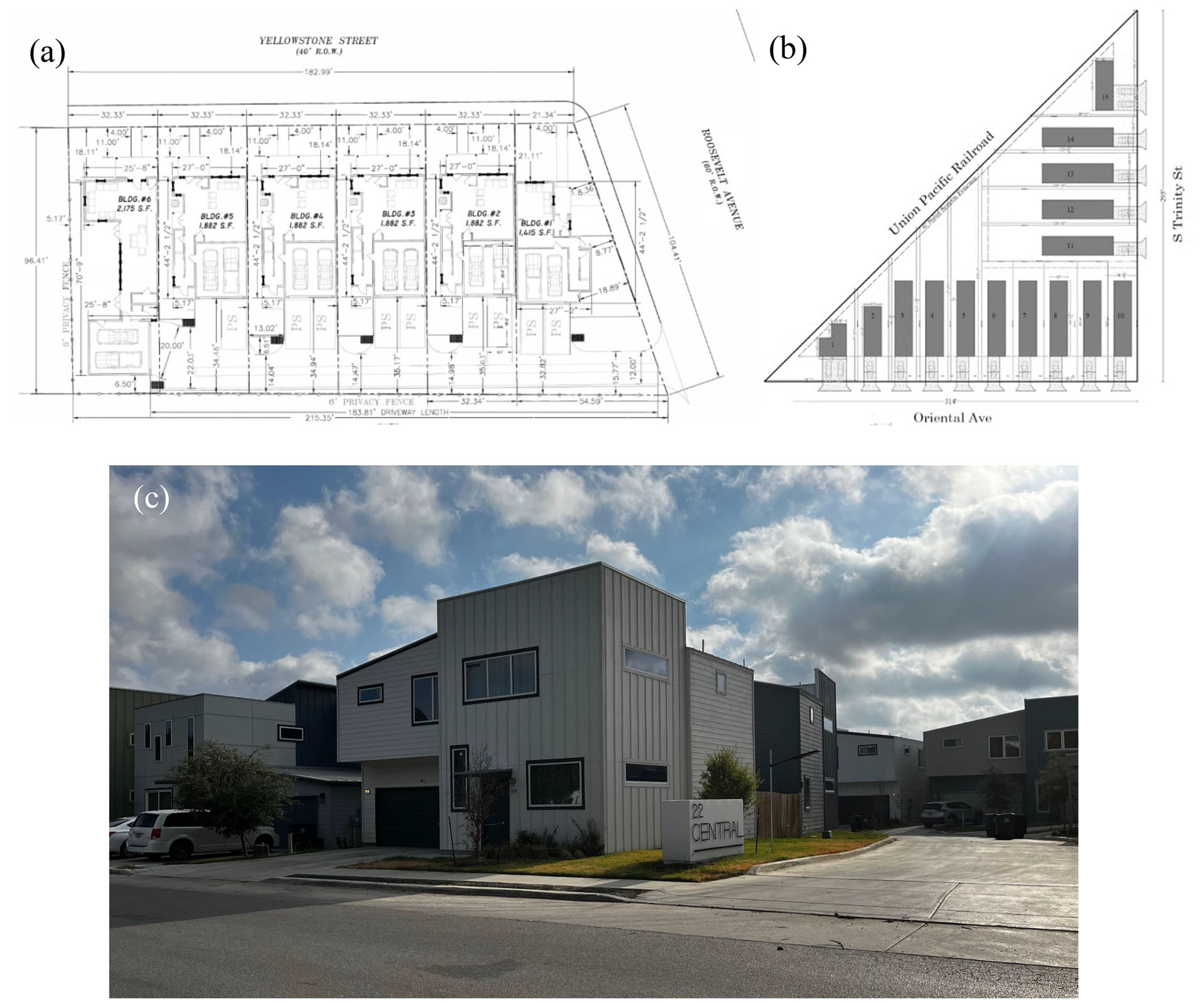Uncovering JAPA
San Antonio's Infill District Zoning

How can Euclidean-style zoning be adapted to encourage healthy infill development? While many planners aim to support infill development that promotes walkable, mixed-use areas, middle housing options, live-work opportunities, and historic retrofitting, these initiatives often lack the backing of comprehensive code reform.
Flexible zoning districts can support various types of infill development without requiring mass upzoning or large-scale reform. In "Zoning for Infill Development: San Antonio's Create-Your-Own Zoning District"(Journal of the American Planning Association, Vol. 91, No. 3), Christine Quattro and Esteban López Ochoa identify an innovative zoning tool used in San Antonio, Texas, that has a history of supporting incremental infill development.
How Does the Infill Development Zone Work?
In exchange for complying with stricter documentation and public hearing procedures, developers gain the flexibility to create customized zoning with unique setbacks, building heights, mixed uses, and open space requirements. This option is available to parcels located within inner-city neighborhoods where San Antonio's planning goals have identified a need to restore and repurpose underutilized land. The policy was designed to address the "donut effect" common in older cities.
The current Infill Development Zone (IDZ) base zoning district includes three tiered options, depending on the intensity of land use and the requested height. An additional IDZ overlay is available to waive parking requirements. Once approved, IDZ parcels are exempt from stormwater requirements, utility upgrades, and traffic impact studies — standards typically expected of suburban sprawl development and difficult to retrofit into historic neighborhoods.

Figure 3: Six types of IDZ infill development and the reasons used.
Rezoning to IDZ typically takes 60 days, with a zoning commission hearing held one month after submission and a city council hearing one month later. Over the past 20 years, only a handful of proposals reviewed by the zoning commission were subsequently denied by the city council. Between the two hearings, developers are more likely to make amendments to reach a compromise with the community.
San Antonio's IDZ is unique — distinct from the infill zoning codes of other cities. While other municipalities offer flexible infill tools, these are often designed for larger areas or require adherence to detailed design standards that inhibit the diverse, parcel-specific development typical of San Antonio's IDZ applications.
Is idz spot zoning?
The validity of zoning districts such as the IDZ has been contested in courts and city council meetings. Opponents argue that these tools constitute arbitrary or spot zoning. Court opinions in several states have addressed the use of floating zones and the limitations of spot zoning, including Rodgers v. Village of Tarrytown (1951); Sheridan v. Planning Board (1969); and City of Pharr v. Tippitt (1981), along with two similar cases in North Carolina.
These decisions affirmed that zoning districts, such as the IDZ, are legal when their placement serves the public interest and aligns with comprehensive planning goals.
In San Antonio, the city reviews each proposal to ensure compliance with the criteria outlined in the Tippitt decision: the proposal furthers the city's planning goals, the land uses are suitable for the area, it applies only to targeted infill areas (inner-city), and the design reflects the character of the surrounding neighborhood.

Figure 4: Three examples of fee-simple subdivision on previously vacant lots. (a) Townhomes subdivided along shared walls to allow for individual addresses and homeownership at 202 Yellowstone Avenue, (b) small shotgun homes on a uniquely shaped corner lot abutting the Union Pacific Railroad (611 Oriental), and (c) 22 Central, a modern cottage cluster on Rainbow Drive.
Results of IDZ
The authors' research on IDZ approvals over the past seven years shows that the district is fulfilling its intended purpose: promoting adaptive reuse of underused parcels in the urban core. Its widespread application across the inner city has spanned various lot sizes, shapes, land uses, and locations. A range of entities, including community organizations, small business owners, and the city itself, have applied for its flexibility.
Approved IDZ developments reflect historic land use patterns, such as workspaces with apartments above, and modern best practices, including pedestrian-oriented complexes that integrate housing, retail, and services. Traditional Euclidean zoning districts do not support these mixed-use patterns. In the absence of IDZ, a woman operating a quinceañera dress boutique on one side of her duplex would be required to provide four parking spaces, necessitating disruptive paving in the residential area.
Future-Ready Historic Neighborhoods
San Antonio is home to early and streetcar suburbs, built before the city became auto-oriented in the 1960s or adopted zoning in the 1930s. The landscape is characterized by buildings with minimal setbacks and no parking.
Due to historic disenfranchisement, including redlining, segregation, and clustered industrial development throughout the twentieth century, low-income Latino and Black property owners often subdivided residential lots to construct small homes and maximize the limited land available for homeownership. These neighborhoods have benefited from flexible tools like the IDZ code, which allow them to become compliant and apply for permits.
Because of its adaptable and efficient process, the IDZ tool facilitates a combination of incremental and transactive planning among stakeholders. Zoning flexibility must support meaningful development and redevelopment while ensuring compatibility with surrounding communities. San Antonio's IDZ meets these criteria.
KEY TAKEAWAYS
- Flexible zoning encourages infill: IDZ allows customized setbacks, heights, mixed uses, and open space, supporting walkable, mixed-use development without broad rezoning.
- Targeted for inner-city revitalization: IDZ focuses on parcels needing redevelopment, addressing underused land and the "donut effect."
- Streamlined approval process: Rezoning takes about 60 days with hearings, and developers often amend proposals to address community input.
- Legal and community compliance: IDZ is valid when aligned with planning goals and neighborhood character, avoiding arbitrary spot zoning.
Top image: Photo by iStock/Getty Images Plus/ PeopleImages
ABOUT THE AUTHOR


